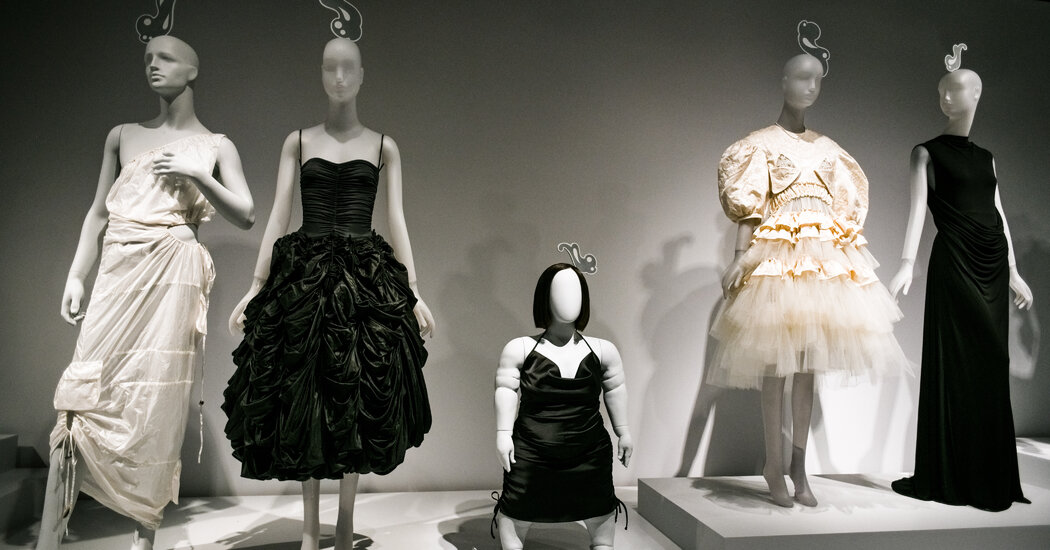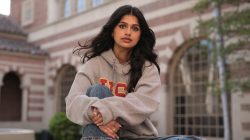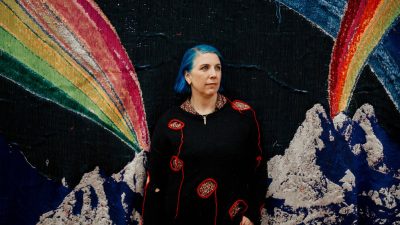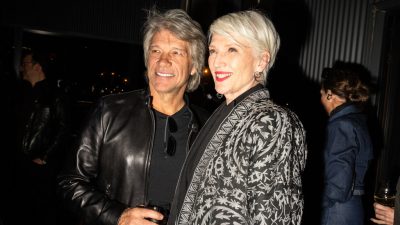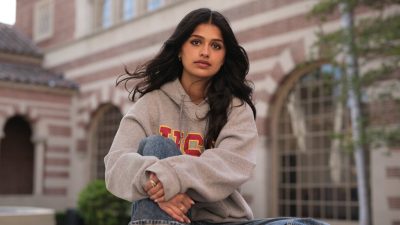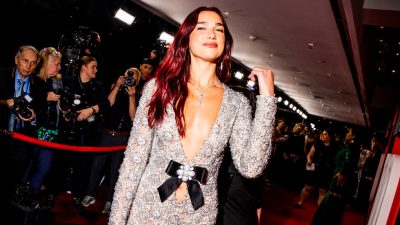Last October, when it was announced that Sarah Burton was leaving Alexander McQueen, the house she had nurtured to new gorgeousness after the suicide of its founder, and would be replaced by an Irish designer named Seán McGirr, it set off a sort of tsunami of angst in the fashion world.
See, it turned out that with McGirr’s appointment, every designer in the stable of its owner, Kering, the second-largest fashion conglomerate in the world, would be a white man. And it only got worse when, in quick succession, three more white men, all Italians, were named to the top jobs at Moschino, Tod’s and Rochas.
Where were the women (not to mention the designers of color), in an industry that largely caters to women? Weren’t we supposed to have moved beyond this? Cue the breast-beating and TikTok wailing.
And then, cue the corrective, which comes courtesy of the Metropolitan Museum of Art’s Costume Institute.
“Women Dressing Women” is a celebration of work from the museum’s own collection by over 70 different female designers from the early 20th century to the present. It is the first time the museum has ever held a survey dedicated solely to the work of women, and it will be the first time that at least half of the 83 pieces on display have ever been seen.
That makes the show both a symptom of the problem (it’s kind of shocking to think that in the 85 years since the Costume Institute joined the Met no one has done this before, despite the complications of a show based on gender) and, perhaps, a signpost for a possible solution.
Indeed, rarely has an exhibition been more perfectly timed. Even if Mellissa Huber, the associate curator of the Costume Institute, who created the show along with Karen Van Godtsenhoven, the guest co-curator, did not intend it that way.
Intended to coincide with the 100th anniversary of women’s suffrage in the United States in 2020, “Women” was conceived in 2019 and postponed when Covid lockdowns changed the exhibition schedule. That delay has recast the result in a way that makes it feel, ironically, even more politically relevant, not just because of developments in the fashion world, but because global events have renewed the debate over women’s bodies and who controls them.
The miracle is that Huber and Van Godtsenhoven have avoided polemics in favor of simply letting the work, in all its astounding variety and breadth of imagination, speak for itself. And it does.
In whispers and songs, silk faille and satin, cotton and wool, it reimagines the record of fashion, filling in the gaps and wardrobes of history with names and pieces long, and wrongly, forgotten; elevating them, finally, to the pedestals on which they belong.
Literally: the show opens with two tall columns as you descend the steps to the Anna Wintour Costume Center.
Atop each column are pieces by the only two female designers to be granted solo shows at the Met: a draped white goddess evening gown from Madame Grès, whose retrospective finally took place in 1994 — despite the fact that the former Costume Institute curator Diana Vreeland began advocating for it in 1980, according to Huber — and a black moth-eaten sweater and skirt from the avant-gardist Rei Kawakubo, whose retrospective occurred in 2017.
Meanwhile, what greets attendees when they reach the Costume Center itself is three sumptuous black gowns from the troika of fashion wisewomen, Coco Chanel (a “fireworks” tulle dress, glittering with sequined starbursts), Madeleine Vionnet (a dark brown velvet column with a gold beaded “ribbon” at the waist) and Elsa Schiaparelli (a midnight blue velvet embroidered evening jacket and skirt). Set in a mirrored triangle that refracts the work in an endless loop, this one-two opener drives home the point: Everywhere you look there are works by women at the top of their game.
That the message is conveyed so subtly is what gives the exhibit its power. This is a damning story, gently told. The revelations begin in the Carl and Iris Barrel Apfel Gallery, which focuses on that time, in the 1920s and ’30s, when female designers actually outnumbered men, and serves up introductions to many names that have been lost to history.
Premet, for example. What’s that? A French house led by a series of women designers, all of whom introduced iterations of the little black dress starting in 1923, a few years before Coco Chanel is credited with its invention. On view is one of their many LBDs, a graceful tiered number from 1929 by the designer Charlotte Larrazet.
And what about Marie-Louise Boulanger (of the house of Louiseboulanger)? She was responsible for the extraordinary dropped-waist beige satin frock being shown, the skirt a highly contemporary mix of straw and ombré dyed ostrich plumes. Or Mad Carpentier, the house co-founded by Madeleine Maltezos and Suzie Carpentier, the women behind a draped organdy gown from the late 1940s that undulates in shades of blue like the surface of the Mediterranean Sea?
It’s impossible to see their work and not think that they should be part of the general designer canon — and that if they were, perhaps our understanding of the foundations of the modern fashion world might be different.
A video of seamstresses bent over their machines, reminder of all the anonymous women who found their livelihood in fashion, provides the bridge from these foundational creators to the world of ready-to-wear: a 360-degree vision housed in the Lizzie and Jonathan Tisch Gallery and anchored by an amethyst velvet Maria Monaci Gallenga gown from 1925 strewn with gold lotus blossoms. Previously attributed to Mariano Fortuny (oops) and in fragile condition, it has been repaired and is making its exhibition debut.
From there the show takes you on a whistle-stop tour through the kaleidoscope of female imagination contained in clothing, leapfrogging through Ann Demeulemeester’s appropriation of the undertaker’s suit and Donna Karan’s cold-shoulder gown, Norma Kamali’s parachute ruching and the draped chiffon of the Indigenous designer Jamie Okuma. The galleries are so multilayered with identities and invention it can be hard to keep track of who made what, though it’s fine to just abandon yourself to enjoyment.
There is unexpected delight in discovering the web of connections the show uncovers, both in the history of who made the clothes and who wore them. On one wall, for example, an animated family tree traces the way the houses of Jean Hallée and Paquin trained two designers — Madame Madeleine and Madeleine Lepaeyre, who in turn gave birth to the house of Madeleine & Madeleine, which they led. It’s a bit delicious to learn that Louise Nevelson, known for her monochromatic sculptures, donated the Bonnie Cashin mohair plaid ensemble and that Lauren Bacall had been the proud owner of the Sonia Rykiel powder pink skirt and striped sweater in the show (both designs never before exhibited).
Six “intergenerational” juxtapositions are shown back to back in the center of the main gallery, with a two-way mirror between each pair so the reflection of one shadows the other, like a ghost, hovering just behind: Prada’s oily feathered coat against Schiaparelli’s emerald metallic faille gown; Fortuny’s pleated Delphos dress (the one that Mariano’s wife and muse, Adele Henriette Elisabeth Nigrin Fortuny was instrumental in creating) against Ester Manas’s ruched mesh (both made by a wife-and-husband team, both structured to conform to the body, rather than the other way around).
The totality creates an unexpectedly emotional experience while refusing to cater to reductionist generalities about “female” design (or who gets to wear the clothes; one of the mannequins is male, a reminder that the show may be gendered, but reality is not necessarily).
Indeed, Van Godtsenhoven pointed out, an underlying theme here is that the axiom that female designers create clothes for life while male designers create clothes for fantasy is as much a canard as the fetishization of the male designer as a sacred monster or an impossible artist.
After all, for every Kangaroo dress by Isabel Toledo that drapes gracefully over the maternal body — there is a silver sequined fairy tale of a halter-neck gown, like the one by Sarah Burton for Alexander McQueen, that is so physically unforgiving it required a specially-ordered mannequin; for every minimalist trouser suit by Jil Sander, there is a lumps- and- bumps explosion of weirdness by Georgina Godley; for every 3-D printed futuristic bodysuit by Iris Van Herpen, there is an adaptable dress like the one Jasmin Soe designed for women with achondroplasia, which causes short stature, to adjust to their own taste.
In other words, the breadth of the exhibit makes a potent argument that the idea there are not enough women in fashion is misguided; that it is not really about a lack of female representation (or auteurship), but an institutional failure on all parts of the industry — brands, schools, museums, media — to recognize it, remember it and celebrate it.
“When we keep repeating the same names — Dior, Balenciaga — we create a canon and a history, and people start to drop off,” said Van Godtsenhoven, the co-curator. And then, “all of a sudden, all we are talking about are ‘masters’ and ‘fathers,’” rather than “mothers”
But really, the fashion world is replete with extraordinary women, if people would only look. That’s on all of us.
As Claire McCardell once wrote, “Most of my designs seem startlingly self-evident. I wonder why I didn’t think of them before.” The same could be said of this show, as Huber pointed out. When asked why it took so long (and why it took two women to finally make it happen), she hedged diplomatically.
Whatever the reason, we should just be thankful the moment is finally here. After all, there are big jobs still to be filled at major European fashion brands, including Givenchy. Here’s hoping their C.E.O.s take the time to stop in at the Met. They might leave with a different sense of the possible.
Women Dressing Women
Through March 3, Metropolitan Museum of Art, 1000 Fifth Ave., (212) 535-7710; metmuseum.org.
Sumber: www.nytimes.com
